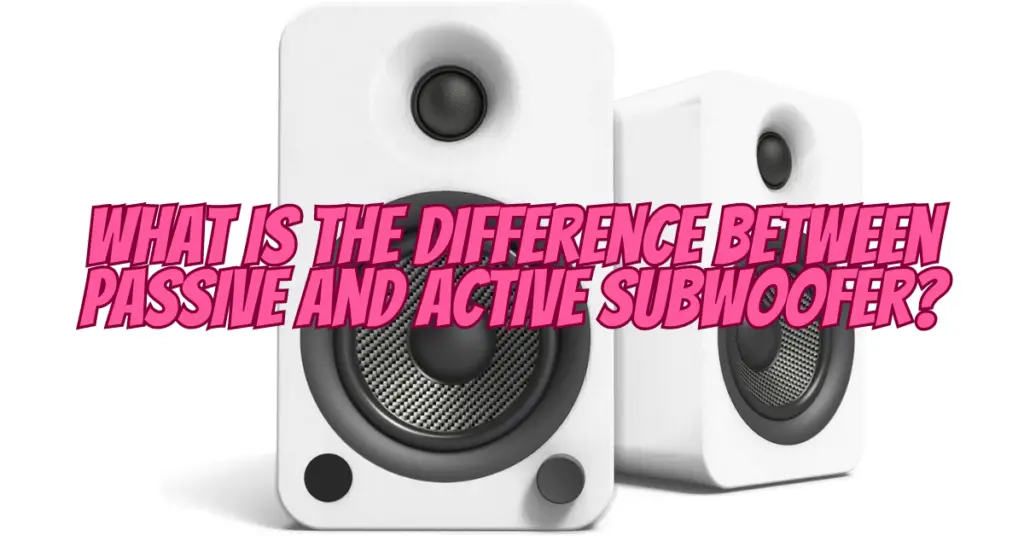When it comes to enhancing your audio setup, subwoofers play a pivotal role in delivering deep, immersive bass. However, the choice between a passive and an active subwoofer can be perplexing. In this article, we’ll explore the fundamental differences between passive and active subwoofers, shedding light on their unique characteristics, applications, and the advantages each brings to your audio experience.
1. Passive Subwoofers:
Passive subwoofers are speakers without a built-in amplifier. They rely on an external amplifier or receiver to provide power and process the audio signals. Passive subwoofers require careful matching with an external amplifier to ensure optimal power delivery and sound quality. Typically, they come in various sizes and configurations, allowing users to choose based on their specific audio needs.
Advantages:
- Customization: Passive subwoofers offer the flexibility to pair them with different amplifiers, allowing users to customize their setup according to their preferences.
- Durability: Without internal amplifiers, passive subwoofers tend to generate less heat during operation, contributing to their longevity and reliability.
- Suitable for High-End Systems: Audiophiles and home theater enthusiasts often prefer passive subwoofers for high-end audio setups, as they can fine-tune their sound by selecting specialized amplifiers.
2. Active Subwoofers:
Active subwoofers, also known as powered subwoofers, come with a built-in amplifier within the speaker cabinet. This integrated design simplifies the setup process, as users don’t need to worry about matching external amplifiers or adjusting complex settings. Active subwoofers are self-powered, which means they receive line-level audio signals directly from audio sources such as AV receivers, sound systems, or even portable devices.
Advantages:
- Plug-and-Play Convenience: Active subwoofers are user-friendly and require minimal setup. They are ideal for individuals seeking a hassle-free, ready-to-use solution without the complexity of external amplifiers.
- Optimized Performance: The built-in amplifiers in active subwoofers are specifically tuned to match the speaker’s characteristics, ensuring optimal power delivery and sound quality. This results in enhanced bass performance and overall audio experience.
- Space Efficiency: Active subwoofers often come in compact designs, making them suitable for environments with limited space. Their integrated amplifiers eliminate the need for additional equipment, saving valuable room space.
Conclusion
Choosing between a passive and an active subwoofer ultimately depends on your specific audio requirements, technical expertise, and personal preferences. Passive subwoofers offer customization options and are favored in high-end audio setups where enthusiasts can select specialized amplifiers for tailored sound. On the other hand, active subwoofers provide ease of use, plug-and-play convenience, and optimized performance, making them ideal for users seeking a straightforward solution without the complexities of external amplifiers.
Understanding the differences between these subwoofer types empowers you to make an informed decision based on your individual needs, ensuring that your audio system delivers the deep, resonant bass that enriches your music, movies, and overall audio experience.


